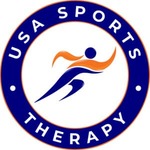Physical therapy is best known as a solution for pain and injuries. However, while physical therapy can be used for a variety of conditions, many patients are unaware that it can also be used to treat sciatica, which affects millions of people worldwide.
Physical therapy for sciatica treatment can involve a variety of exercises and techniques that focus on reducing pain, restoring normal movement, and increasing overall strength. The goal is to decrease inflammation, reduce the pressure on the sciatic nerve and help the patient return to normal activities.
If you are struggling with sciatica pain, here’s what you need to know about the benefits of physical therapy.
What Is Sciatica?
Sciatica is a term used to describe pain, numbness, and tingling that radiates from the lower back down the buttocks and legs. It is caused by compression of the sciatic nerve, which runs from your lower spine to your feet. Sciatica can be quite painful and debilitating, preventing you from performing everyday activities like walking or sitting for long periods.
What Causes Sciatica?
Sciatica is usually caused by a herniated or bulging disc in the lower back, but it can also be caused by spinal stenosis, spondylolisthesis, peripheral nerve entrapment, and other physical and genetic predisposing factors.
The onset of sciatica pain can be sudden or may come on gradually over time. It is most common among people over fifty but can affect people of any age, especially those in occupations that involve a lot of heavy lifting, twisting, or high levels of physical activity.
What Are the Symptoms of Sciatica?
The most common symptom of sciatica is pain that radiates down the back of one or both legs. This pain may be sharp and shooting or a deep ache that lasts for days or weeks at a time. Other symptoms can include numbness, tingling, muscle weakness, and difficulty moving or controlling the affected legs. In some cases, sciatica pain may be so severe that it makes it difficult to stand, sit, or walk. The pain can also vary in intensity and frequency depending on your activities. For example, sitting can worsen the pain, while lying down can help relieve the discomfort in some cases.
Overall, common symptoms of sciatica may include the following:
- Sharp pain
- Numbness
- Weakness
- Tingling
- Difficulty walking or standing
- Reduced mobility
If left untreated, the pain associated with sciatica may become more severe and affect your everyday activities. It is important to seek medical attention if you are experiencing sciatica-like symptoms.
Why Is Physical Therapy Beneficial for People With Sciatica?
Physical therapy can be very beneficial in helping people with sciatica manage their symptoms and reduce their pain. It can help to improve flexibility and strength, as well as reduce inflammation. Our doctors of physical therapy can also advise how to best rest and move the body to prevent further injury or flare-ups of sciatica pain.
Common physical therapy techniques used to treat sciatica include:
- Stretching and strengthening exercises
- Decompression therapy for sciatica
- Manual therapy (hands-on treatment)
- Ultrasound or electrical stimulation to reduce inflammation
- Heat or ice for managing muscle spasms
- Massage for relaxing tight muscles
At USA Sports, a physical therapist will work closely with you to develop a personalized treatment plan that fits your individual needs. With the right combination of activities and treatments, it’s possible to reduce sciatica-related pain and get back to a more active lifestyle. Additionally, physical therapists can advise on other lifestyle modifications like diet and exercise to help support your recovery. With the proper care, you can take steps toward finding relief from sciatica pain.

Physical Therapy Exercises for Sciatica
When you visit a physical therapy clinic, your therapist will likely recommend a combination of stretching and strengthening exercises to target the muscles that could be causing or contributing to sciatica pain. Strengthening activities may include:
- Low-impact aerobic exercise
- Resistance training with weights or bands
- Core stability exercises
- Stretching routines
These exercises reduce tightness in the lower back, glutes, and upper legs, helping to ease pressure on the sciatic nerve. Your physical therapist will work with you to create a personalized routine for your health needs and lifestyle, combining stretching with strengthening and decompression therapy for sciatica to manage your symptoms and reduce pain.
How Do You Rehab a Sciatic Nerve?
Of course, physical therapy is one possible solution to rehabbing a sciatic nerve. But there are also a few other treatment options that can be used alone or in combination with physical therapy.
Rehabilitating a sciatic nerve typically requires rest, physical therapy, and the use of cold or hot compresses. Your doctor may prescribe medications to help manage pain and inflammation. Depending on what is causing sciatica, additional treatments may be necessary.
How Long Does Physical Therapy Take for Sciatica?
The length of time it takes to rehabilitate a sciatic nerve depends on the cause, severity of the injury, and other factors. In general, physical therapy for sciatica can take anywhere from four to eight weeks. During this time, your physical therapist may recommend specific exercises to help reduce inflammation and improve your range of motion.
It is important to remember that rehabilitating a sciatic nerve takes time and patience. Make sure you follow through with all instructions given by your doctor or physical therapist to get the best possible results.
Can Sciatica Physical Therapy Prevent Re-Injury?
Yes. Physical therapy for sciatica can help prevent re-injury by strengthening the muscles surrounding the affected area and helping increase flexibility and range of motion. Over time, regular physical therapy exercises can improve posture and reduce the risk of recurrence. This is why it is important to stick with your treatment plan and follow up with your doctor or therapist as necessary.
In some cases, simple lifestyle changes may also contribute to preventing sciatica from recurring. These modifications include proper posture while sitting or standing, avoiding activities that strain the back, and maintaining a healthy weight. Additionally, stretching regularly can help reduce tension in the lower back area and relieve sciatic pain over time.
Conclusion: What You Need to Know About Treatments for Sciatica Relief
Sciatica can cause significant discomfort and interfere with everyday activities. However, various treatments are available to relieve pain and help prevent the condition from recurring. These treatments range from home remedies such as stretching exercises and hot or cold compresses to more invasive options like surgery. It is important to discuss your individual symptoms with your doctor so that you can create an effective treatment plan for your specific case. By following your treatment plan, you can reduce the intensity of sciatica pain and prevent recurrence in the future.
To get started, contact a sciatica treatment physical therapy South Florida clinic. At USA Sports, a licensed physical therapist will speak to you and answer any questions you may have. They will work with you to create a PT plan tailored to your fitness goals and will be by your side at every stage of your recovery process.

